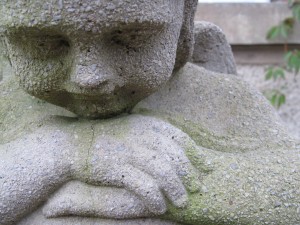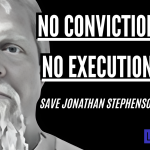“So many factors work against our visionary initiative.It is a human tendency to become stuck and to build ruts.”
Isn’t it funny how we tend to sit in the same place every time within a classroom or at church or sometimes even in our own dining room?
I am just finishing up my first semester of teaching as an adjunct professor at the Seminary of the Southwest . I’ve had a great time with a small group of nine amazingly brilliant, exceptionally open, motivated learners. Interestingly, for the most part, each student has sat in the same seat or close to it each time we have met.
I do the same thing. Ever since I began to attend the Episcopal Church almost 15 years ago now, I tend to sit on the far right side about three quaters of the way back. At St. Stephen’s, I sat there because it allowed me a good view of the garden space out the clear paned windows. Now in a very different worship space at St. David’s, I am still in the same place but no longer for the same reason. I realize now that I like to sit there because I can see the backs of the heads of people whose stories I know. Though we are in a larger parish, over time I have had the privilege of hearing many stories of God’s grace at work in the hearts and lives of the people who sit in front of me… and that “hard evidence” of the love of God enhances my worship. I am also in a rut.
I am always a little leery of ruts. Perhaps it is my inclination toward prophetic gifting. As my friend Mary calls it: “the gift of sanctified criticism.”
19See, I am doing a new thing!
Now it springs up; do you not perceive it?
I am making a way in the desert
Though God is always doing a new thing, it seems that the same forces that make me want to sit in the same seat in church, are always at work in the church moving the fresh work of God toward institutionalization (read ruts). In response, God is always sending prophets to remind His people of His ways and to look once more for that fresh work of God. If you want to read an amazing (albeit academic and very dense) book on this pattern, I recommend Walter Brueggemann’s classic Prophetic Imagination.
Another reason I am leery of ruts is the story of Lot’s wife. This is what I wrote in My Own Worst Enemy:
Remember Lot’s wife! Whoever tries to keep his life will lose it, and whoever loses his life will preserve it. (Luke 17:32–33)
Many scholars say that the best commentary we find on Scripture is another portion of Scripture. This New Testament reference to the story of Lot’s wife is a small illustration sandwiched in the middle of a section speaking of the time when the kingdom of God comes suddenly to earth. The message of this illustration is clear: If you try to plant yourself in the past—save your life as you define it now—you will lose it. But if you take this leap, if you let go of your life as it is, as you know it, you will be saved. This is not presented as a nice option but rather an essential element of our faith journey.
The Christian life is one that we are called to live in forward motion. Sometimes, though, we get stuck in a rut without realizing it. One common way we avoid the transformative, shining life we have been called to live is to become caught in what I call the unimagined life. As wonderfully gifted nurturers, we can get lost in fulfilling the dreams and agendas of others and never even think about what God might have in mind for our particular lives . . . beyond taking care of those we love. We choose to live passively, responsively, without personal vision, investment, or creativity. Or for those who may dare to sense God’s unique calling, it can become a call we never get around to answering. We struggle to find time for our own hopes and dreams, never thinking to take or make the time. As the saying goes, “A woman’s work is never done.” Let’s face it: It’s less risky to operate from someone else’s vision, passion, and plan.
So many factors work against our visionary initiative. It is a human tendency to become stuck and to build ruts. Understandably, the better the life, the greater the temptation to preserve it as is. Remember the rich young ruler? (Matthew 19:16–30). When the flow of our life is good, we want to institutionalize whatever has brought that goodness. We want to turn our living God into a fixed idol.
So, this Advent, I am focusing my gentle curiosity in the direction of the ruts in my own life:
- Morning coffee in bed (okay, this one’s not negotiable)
- Watching “Morning Joe” as I drink my morning coffee
- Living with a messy office (curious, very curious… Why do I seem to be resistant to order here? What would it take to order my work?)
- Suffering in silence (a definite calling to change here…. Am I willing to learn to lament?)
- Going to bed after watching the weather at 10:20 (I sound like such an old lady!) I say I want to get up earlier, maybe I can go to bed earlier, too.
- Believing that faithfulness means working all the time.
On our trip to Germany, I was inspired by the brilliant work of Marc Chagall on the stained glass windows of St. Stephen’s church in Mainz (above). Their beauty alone is inspiring but even moreso the fact that Chagall began the first window at age 91 completing a total of 9 before he died at age 99. Taking on a new project at such an age tells me that he likely had little tolerance for ruts, at least in his creative endeavors.
So, where are there ruts in your life? Which ones are asking for your gentle curiosity?















